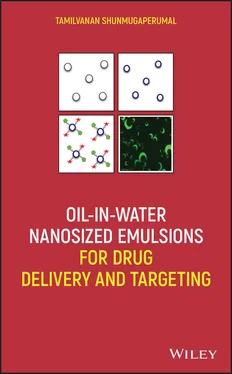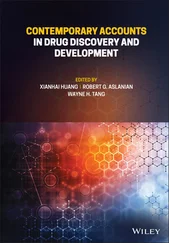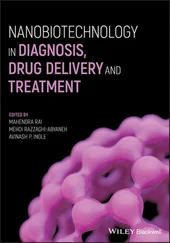For the development of cationic emulsions in ophthalmology, the use of quaternary ammonium compound (QAC) for their cationic property rather than their preservative effect is being considered. Therefore, Liang et al. (2008) suggested the use of lipophilic cetalkonium chloride (CKC), one of the longest alkyl‐chain components, as a cationic agent in ophthalmic emulsions. With a highly lipophilic QAC, the distribution between the oil and aqueous phases of the emulsion is modified because of the affinity toward the oil phase, further favoring the cationic agent role over the preservative role. Using in vivo confocal microscopy (IVCM) for in vivo tissues images and impression cytology (IC) for ex vivo epithelium inflammatory marker expression in correlation with standard immunohistology for deep infiltration and apoptosis, the same author assessed the toxicological effects of benzalkonium chloride/CKC emulsion/solution formulations on the ocular surface of rabbits following multiple topical applications (Liang et al. 2008). These in vivo and ex vivo experimental approaches demonstrated that ocular surface toxicity was reduced by using an emulsion instead of a traditional solution and that a CKC emulsion was safe for future ocular administration.
Overall, it is preferable to formulate nanosized emulsions devoid of preservative agents and fill it in sterile single‐dose packaging units (manufactured using heat blow‐fill‐seal technology) to prevent potential contamination due to repeated use of multidose packaging. It should be pointed out that the two available ocular emulsion products (Refresh Endura ®and Restasis ®, Allergan, Irvine, CA, USA) on the market are preservative free and packed in single‐use vials only. Currently there is no commercial parenteral emulsion that contains preservatives and research concerning the problem of preservation of nanosized emulsion is very limited (Jumaa et al. 2002; Pongcharoenkiat et al. 2002; Han and Washington 2005; Swietlikowska and Sznitowska 2006).
2.3. CURRENT AND NEAR FUTURE DIRECTION
2.3.1. Colloidal Particle‐Stabilized Emulsions
In addition to surfactants, polymers, and biomolecules, colloidal particles have long been recognized to stabilize droplets, e.g., as in Pickering emulsions (Pickering 1907). Examples of various colloidal particle types used to stabilize emulsions include BaSO 4, crystalline ferric oxide, carbon black, bentonite, kaolinite clay, latex, and silica particles. The effectiveness of emulsion stabilization by particles depends on the particle size, shape, concentration, and wettability (expressed as the contact angle at the three‐phase boundary and is equivalent to the HLB of a surfactant), as well as the level of particle aggregation as controlled by particle–particle interaction (Aveyard et al. 2003). It is proposed that the conventional model for emulsion stabilization by solid particles assumes the formation of a “densely packed” layer at the oil–water interface, which prevents droplet coalescence by a steric barrier mechanism. If charged, particles may give rise to electrostatic repulsion, which further enhances emulsion stability.
Many commercial products based on emulsions (for cosmetic and food uses) include both surfactants and particles, hence the characterization and mechanisms of stabilization for emulsions with mixed interfacial layers are of great importance (Binks et al. 2007a, b). These droplet/surfactant/particle systems are also of interest in designing low‐surfactant emulsion systems with enhanced stability (Midmore 1998). Tambe and Sharma (1993) reported the improvement in the stability of emulsions stabilized with calcium carbonate particles following the addition of stearic acid. This synergistic effect was attributed to the adsorption of surfactant on solid particles resulting in the change in particle wettability. A strong emulsification synergy in stabilizing o/w emulsions between hydrophilic colloidal silica (Ludox) and nonionic PEO surfactants added from the water phase has been demonstrated by Midmore (1998). The synergy was attributed to the POE micellar adsorption or POE chain bridging between silica particles, which resulted in better interfacial adsorption. Synergistic stabilization of o/w emulsions by a mixture of nonionic surfactants and hydrophilic silica nanoparticles has recently been studied by Binks et al. (2007a, b) highlighting the importance of preparation protocol. Attachment energy of a silica particle at the oil–water interface was correlated to emulsion stability. Velev et al. (1996) reported that the adsorption of lysine onto negatively charged latex particles enabled interfacial adsorption due to the reduction of hydration forces and electrostatic repulsion between droplets and particles. The influence of droplet–particle electrostatic interaction on emulsion stability was studied by Binks and Catherine (2005) and Lan et al. (2007). Addition of cationic surfactant CTAB to negatively charged hydrophilic silica dispersions as the aqueous phase of emulsions resulted in enhanced stability at low CTAB concentrations, i.e., the region where CTAB is preferably adsorbed onto silica surface and promoted interfacial adsorption due to neutralization of surface charge and optimization of particle hydrophobicity. This synergistic emulsion stabilization comes from three sources: CTAB (1) hydrophobizes silica nanoparticles by charge neutralization, (2) promotes nanoparticle aggregation, and (3) reduces interfacial tension. However, when the CTAB concentration is such so that both droplets and silica are positively charged, interfacial adsorption and emulsion stability are lost and thus emulsion stability is dramatically reduced.
Simovic and Prestidge (2007) showed that nanoparticle layers significantly influence the release kinetics of a model lipophilic API [di‐butyl‐phthalate (DBP)] from polydimethylsiloxane o/w emulsions; either sustained or enhanced release can be achieved depending on the nanoparticle layer structure and API loading level. Nanoparticle layers can be engineered to facilitate a range of release behaviors and offer great potential in the delivery of poorly soluble APIs. Particle‐stabilized emulsions have been extensively studied in terms of stabilization mechanisms (Binks and Lumsdon 2000; Binks and Catherine 2005), synergy with common emulsifiers (Lan et al. 2007; Binks et al. 2007a, b), and interfacial properties (Simovic and Prestidge 2003, 2008). However, few reports have focused on their carrier properties as dermal delivery vehicles, e.g., penetration and targeting skin layers. Recently, the influence of nanoparticle coating of submicron (nanosized) o/w emulsion droplets on the in vitro release and dermal delivery characteristics, with particular emphasis on potential controlled release and targeted skin delivery of all‐trans‐retinol, was reported by Eskandar et al. (2009). MCT o/w emulsions have been stabilized with mixed interfacial layers composed of lecithin or oleylamine and hydrophilic silica nanoparticles using a simple cold high‐pressure homogenization technique. These emulsion‐based hybrid API delivery systems showed improved topical delivery of all‐trans‐retinol; nanoparticle layers significantly improved the performance of o/w emulsions as encapsulation and delivery systems for all‐trans‐retinol. Therefore, emulsion‐based hybrid API delivery systems should have a potential for future directions.
2.4. LIPOPHILIC API INCORPORATION PATTERN INTO NANOSIZED EMULSIONS
There are four different approaches to incorporate lipophilic APIs or heat labile molecules into the oil phase or at the o/w interface of the nanosized emulsions, namely (Tamilvanan and Benita 2004),
extemporaneous API addition,
de novo emulsion preparation,
Читать дальше












